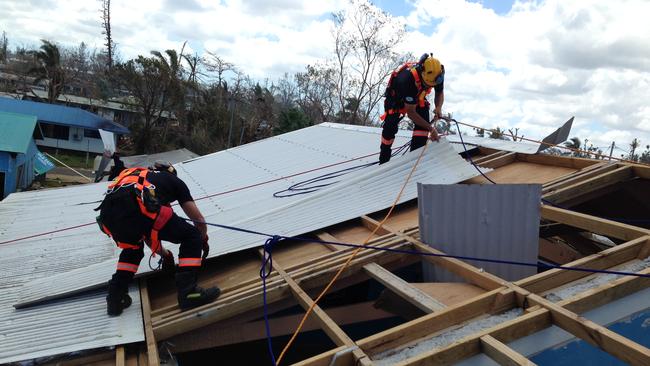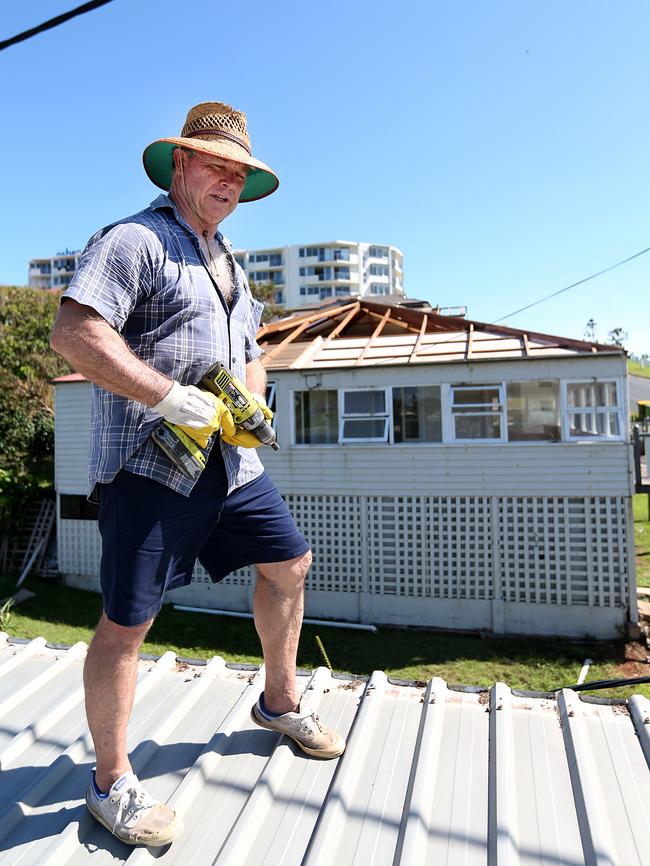Government funds could help pay to replace roofs on homes, Northern Australia Insurance Premiums Taskforce says
TAXPAYERS would replace the roofs of almost 25,000 north Queensland houses under a plan to help them withstand cyclones and ease the bill of insurers.

QLD News
Don't miss out on the headlines from QLD News. Followed categories will be added to My News.
TAXPAYERS would replace the roofs of almost 25,000 north Queensland houses under a plan to help them withstand cyclones and ease the bill of insurers.
The Insurance Council of Australia (ICA), which is working with the Commonwealth to help protect vulnerable communities, asked the Turnbull Government to consider stumping up the cash.
The proposal, submitted to the Northern Australia Insurance Premiums Taskforce, was the best, low-cost option, the ICA said yesterday.
It said the plan would also reduce insurance premiums in the long run. It would mean the Government would pay up to 75 per cent of the cost of retrofitting the roofs of low-income residents. It would be capped at $11,250 a house.
The Government was told the scheme would run for about seven years and should include units and townhouses.
Modelling suggested more than 20,000 houses and 5000 strata units would qualify.

Participating households would be eligible for a home insurance premium rebate of 20 per cent for up to two years while work was undertaken.
ICA chief executive Rob Whelan said the taskforce needed to look outside the box.
“The insurance industry is proposing a third way that would fix the bulk of the problem at a relatively low cost to the taxpayer,” he said.
“Fixing the roofs on pre-1981 homes will provide a lasting benefit to householders and communities and prevent much of the emotional and financial heartache that is unfortunately felt by too many Australians in the north each year.
“This is the most sensible and sustainable solution on the table. It will help those north Queensland households that have the most need of assistance.
“It meets the recommendations of the Productivity Commission’s report into disaster relief funding, which concluded taxpayers are better off funding resilience and mitigation than paying tens of millions of dollars to repair communities after every catastrophe.”


